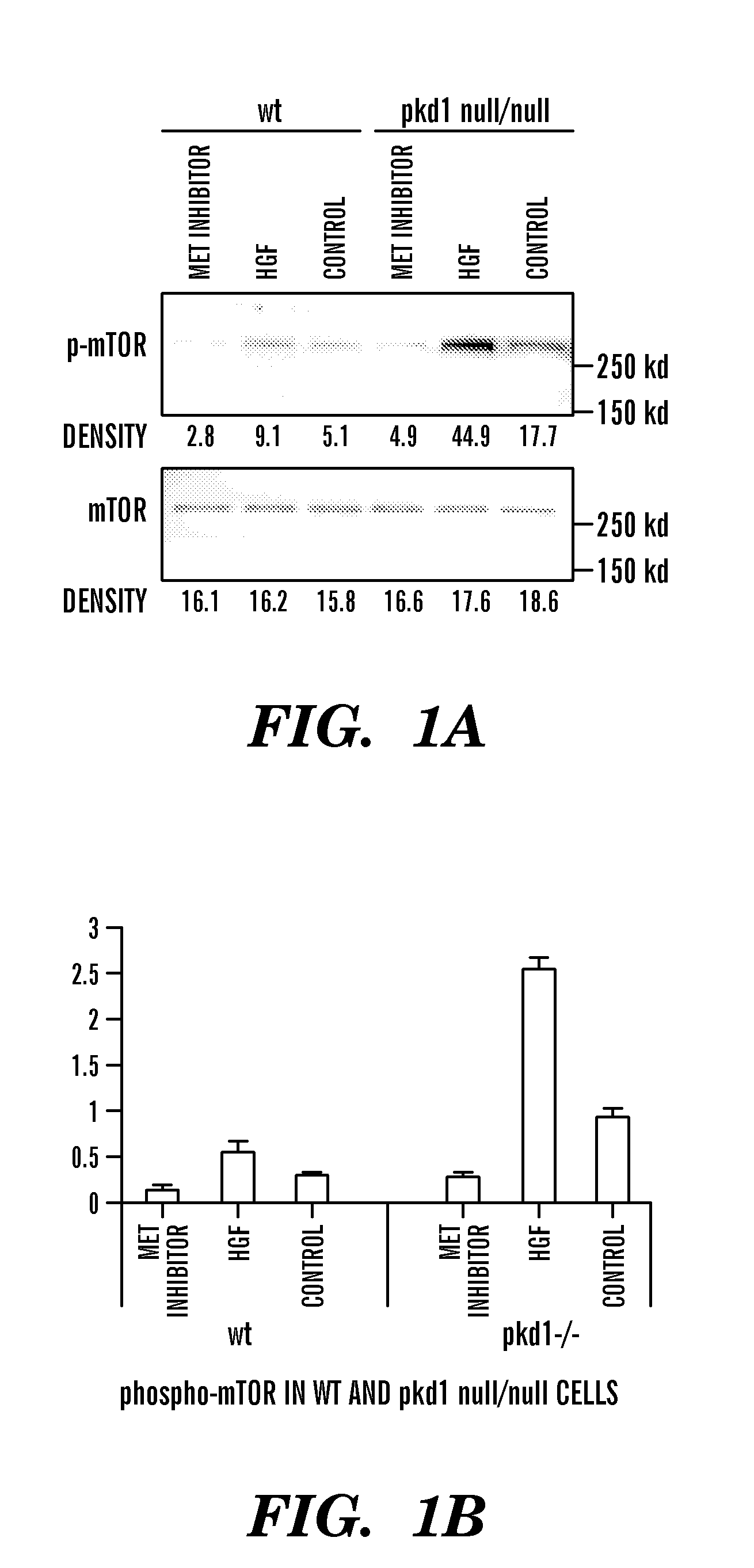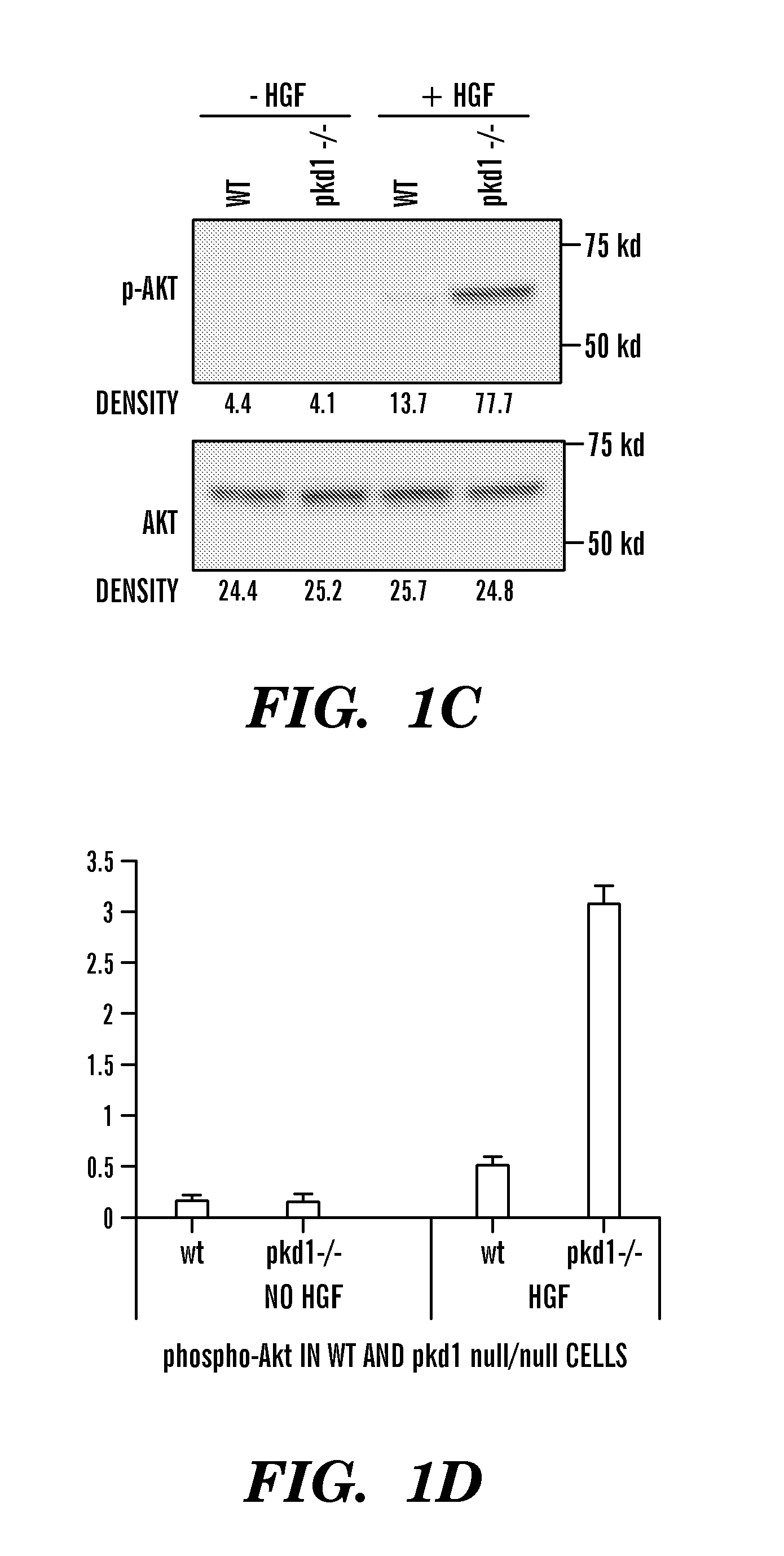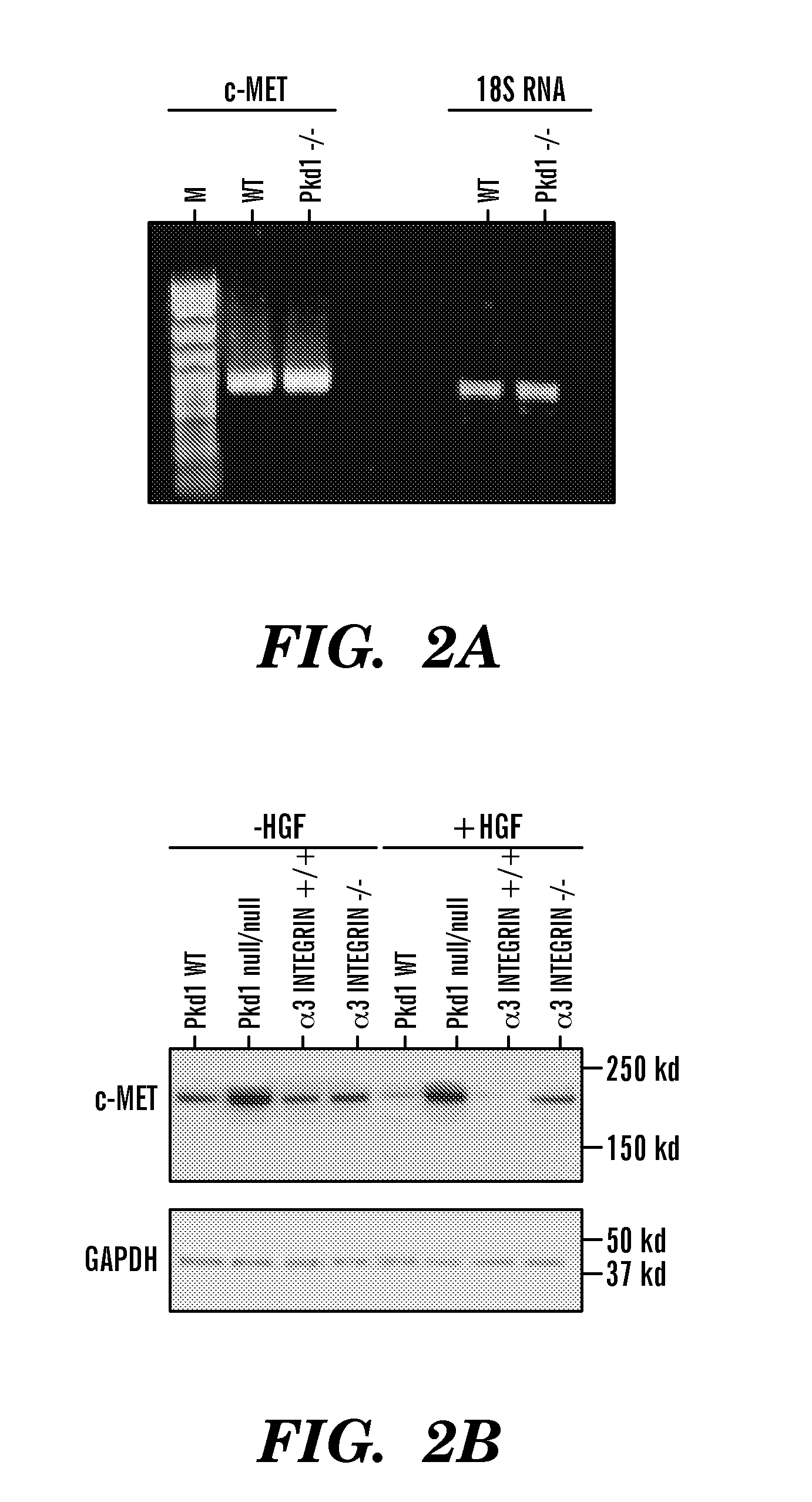Method of treating polycystic kidney disease
a polycystic kidney and kidney disease technology, applied in the field of treating, inhibiting the progression of, or eradicating polycystic kidney disease, can solve the problems of grossly enlarged kidneys and decrease in renal concentration ability
- Summary
- Abstract
- Description
- Claims
- Application Information
AI Technical Summary
Benefits of technology
Problems solved by technology
Method used
Image
Examples
example 1
Reagents
[0116]Antibodies: rabbit polyclonal anti-mouse α3 integrin (Invitrogen #E0524804K, Carlsbad, Calif.), rabbit polyclonal anti-mouse mTOR and anti-mouse phospho-mTOR (Cell Signaling #2972, and #2971, Danvers, Mass.), mouse monoclonal anti-mouse c-MET (Cell Signaling #3127), mouse monoclonal anti-mouse Ubiquitin (Cell Signaling #3936), rabbit polyclonal anti-mouse c-Cb1 (Santa Cruz Biotechnology #sc-170, Santa Cruz, Calif.), mouse monoclonal anti-mouse GM130 (BD Biosciences #610822, San Jose, Calif.). Unless otherwise stated, all chemicals were purchased from Sigma.
example 2
Cells and Mice
[0117]Pkd1null / null mice are Pkd1 null mice, resulted in a null Pkd1 phenotype. Pkd1 wild type (WT) and Pkd1null / null cell line were isolated from embryonic day 15.5 kidneys from a cross of Pkd1null / + mice that also carry a temperature-sensitive simian virus 40 (SV40) large T-antigen transgene, similar with the protocol described in reference 23. Wt and Pkd1null / null cells were cultured in Dulbecco's modified Eagle medium containing 2% fetal bovine serum, 0.75 μg / L γ-interferon, 1.0 g / L insulin, 0.67 mg / L sodium selenite, 0.55 g / L transferrin, 36 ng / ml hydrocortisone, 100 U / ml Penicillin / streptomycin under 33° C. and 5% CO223.
example 3
Immunoprecipitation and Western Blot
[0118]Immunoprecipitation and western-blot were performed using whole cell lysates unless otherwise specified. Confluent cells were collected, washed with PBS, lysed with lysis buffer (20 mM Tris / HCl, 1 mM EDTA, 150 mM NaCl, 1% Triton X-100) containing proteinase inhibitor cocktail tablet (Roche #1697498, Mannheim, Germany) at 4° C. for 30 minutes. After centrifugation at 13,000 rpm for 15 minutes, supernatants were incubated with specific antibody at 4° C. for 1 hour, followed by incubation with Protein G conjugated beads (Pierce Biotechnology, IL) at 4° C. for 2 hours, washed in lysis buffer. Samples were running on 7.5% acrylamide gel, transferred to PVDF membranes and visualized by immunoblotting with respective antibodies.
PUM
| Property | Measurement | Unit |
|---|---|---|
| temperature | aaaaa | aaaaa |
| thickness | aaaaa | aaaaa |
| Band density | aaaaa | aaaaa |
Abstract
Description
Claims
Application Information
 Login to View More
Login to View More - R&D
- Intellectual Property
- Life Sciences
- Materials
- Tech Scout
- Unparalleled Data Quality
- Higher Quality Content
- 60% Fewer Hallucinations
Browse by: Latest US Patents, China's latest patents, Technical Efficacy Thesaurus, Application Domain, Technology Topic, Popular Technical Reports.
© 2025 PatSnap. All rights reserved.Legal|Privacy policy|Modern Slavery Act Transparency Statement|Sitemap|About US| Contact US: help@patsnap.com



